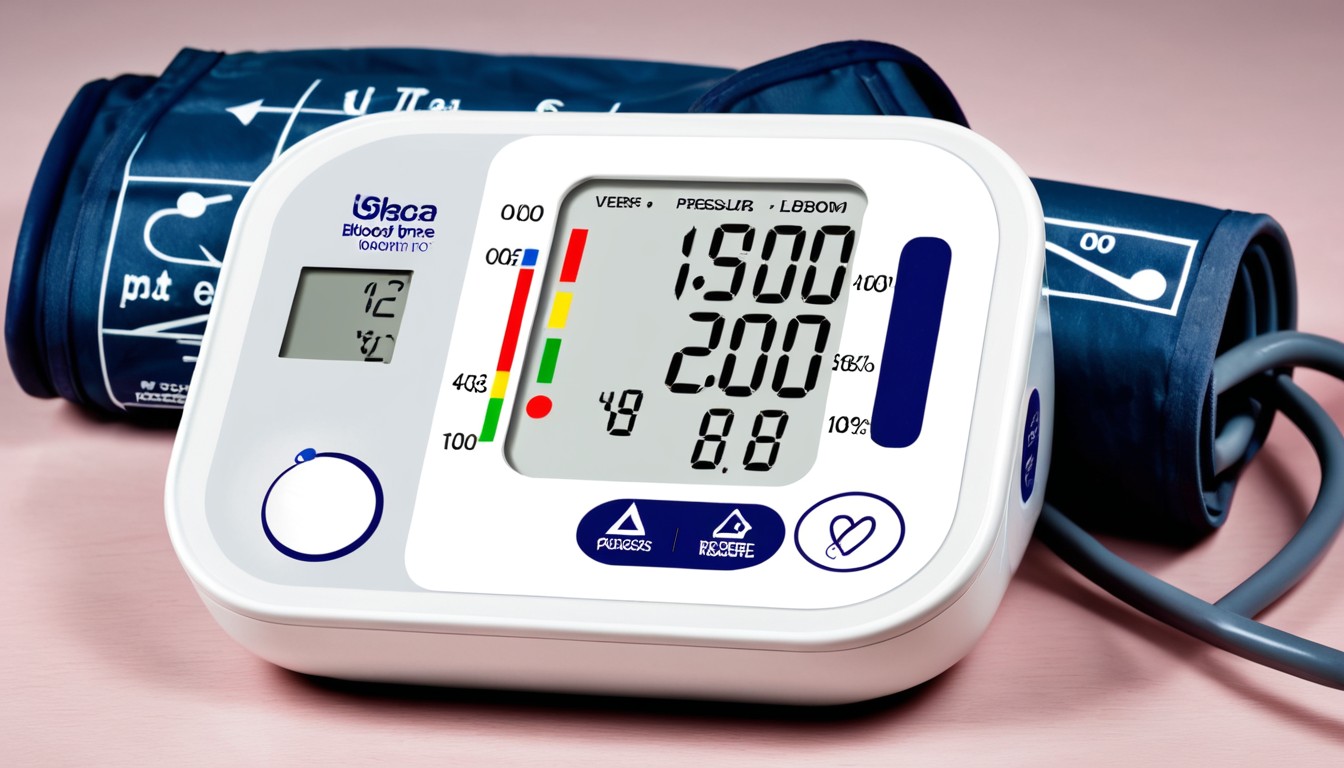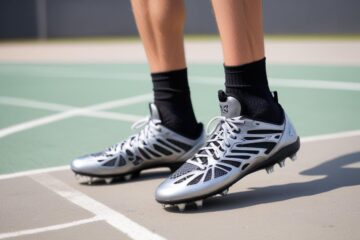In the bustling healthcare landscape of the United Arab Emirates (UAE), monitoring blood pressure has become a crucial aspect of preventive care. With an increasing awareness of cardiovascular health, the demand for reliable BP monitors has surged. These devices empower individuals to track their blood pressure levels conveniently at home, facilitating the early detection and management of hypertension. In this article, we delve into the nuances of blood pressure monitors available in the UAE, offering insights into their types, usage, and factors to consider when choosing the best one.

y2m is reader-supported. When you buy through links on our site, we may earn a commission.
Top Blood Pressure Monitors in UAE
Choosing the Best Blood Pressure Monitors in UAE
Selecting the right blood pressure monitor in the UAE involves thoughtful consideration of various factors to ensure accuracy and user-friendliness. First and foremost, individuals should determine whether they prefer an automatic or manual blood pressure monitor. Automatic monitors are popular for their ease of use, while manual ones provide more control over the inflation process.
Accuracy is paramount when it comes to blood pressure readings. Opting for a monitor with validated accuracy and approval from health authorities ensures reliable results. Additionally, considering the cuff size is crucial, as an ill-fitting cuff can lead to inaccurate readings. The market in the UAE offers a range of cuffs suitable for different arm sizes, promoting comfort and precision.
The source of power is another essential aspect. While some blood pressure monitors operate on batteries, others come with an AC adapter. Users should assess their preferences and lifestyle to choose a convenient power source.
The display features and user interface are significant considerations for the user experience. A clear and well-lit display with large fonts facilitates easy reading of measurements, especially for older users. Additionally, user-friendly interfaces with straightforward buttons enhance overall usability.
Connectivity options are increasingly becoming relevant, with many blood pressure monitors now offering Bluetooth or Wi-Fi connectivity. This feature enables individuals to sync their readings with health apps or share them with healthcare providers for remote monitoring.
Cost is undeniably a factor in the decision-making process. While there is a range of blood pressure monitors available in the UAE, individuals should balance their budget with the features they need. Investing in a reliable and accurate device is a prudent decision for long-term health management.
In summary, choosing the best blood pressure monitor in the UAE involves evaluating factors such as monitor type, accuracy, cuff size, power source, display features, connectivity, and cost. By carefully considering these aspects, individuals can make informed decisions to enhance their at-home blood pressure monitoring experience.
Types of Blood Pressure Monitors in UAE?
Blood pressure monitors in the UAE come in various types, each catering to different preferences and needs. The two primary categories are automatic (digital) and manual (analog) monitors.
Automatic blood pressure monitors, also known as digital monitors, are popular for their ease of use. They feature an inflatable cuff that automatically inflates and deflates, providing quick and convenient readings. These monitors typically display systolic and diastolic blood pressure values, along with the pulse rate. Many automatic monitors in the UAE also come with memory features, allowing users to store and track their readings over time.
Manual blood pressure monitors, on the other hand, require more user involvement. Individuals using manual monitors need to inflate the cuff manually using a bulb and then listen to the blood flow using a stethoscope. Healthcare professionals may prefer manual monitors because of their accuracy, but some users may find them difficult to use.
Another type gaining popularity in the UAE is the wrist blood pressure monitor. These compact devices offer portability and convenience, as they can be worn on the wrist like a watch. However, wrist monitors may be less accurate than arm monitors and proper positioning is crucial for reliable readings.
Ambulatory blood pressure monitors are designed for continuous monitoring over 24 hours. These devices, often used in clinical settings, provide a more comprehensive picture of blood pressure variations throughout the day and night.
Ultimately, the choice between automatic and manual monitors, as well as the consideration of wrist or ambulatory options, depends on individual preferences, comfort level, and specific health needs. Users in the UAE can explore the diverse range of blood pressure monitors to find the type that aligns with their lifestyle and monitoring requirements.
How to Use Blood Pressure Monitors in UAE?
Effectively using blood pressure monitors in the UAE requires careful attention to detail and adherence to proper techniques. Whether individuals are utilizing automatic or manual monitors, the following steps can guide them through the process of obtaining accurate blood pressure readings:
- Select the Right Monitor: Choose a blood pressure monitor that suits your preferences and needs. Ensure that the cuff size is appropriate for your arm to avoid inaccurate readings.
- Prepare for Measurement: Refrain from consuming caffeine, smoking, or engaging in strenuous activities for at least 30 minutes before taking a measurement. Use the restroom if needed, as a full bladder can affect readings.
- Position Yourself Properly: Sit in a comfortable and relaxed position with your back supported and feet flat on the floor. Place your arm on a table at heart level. If using a wrist monitor, follow the manufacturer’s instructions for proper positioning.
- Apply the Cuff Correctly: Position the cuff on your bare upper arm, aligning it with the heart. Ensure a snug fit without overtightening. If using a wrist monitor, position it according to the manufacturer’s guidelines.
- Start the Measurement: For automatic monitors, press the start button and remain still during the measurement. For manual monitors, inflate the cuff to a level around 30 mmHg above your normal systolic pressure, then slowly release the pressure while listening for your pulse with a stethoscope.
- Record the Results: Note the systolic and diastolic readings, as well as your pulse rate. Some monitors may automatically store these readings for future reference.
- Repeat if Necessary: For the most accurate results, take two to three measurements with a brief rest between each. Record the average reading for a more reliable assessment of your blood pressure.
- Follow Recommendations: Consult with your healthcare provider to interpret the results and receive guidance on managing your blood pressure. Regular monitoring at home can provide valuable information for ongoing health management.
By following these steps, individuals in the UAE can ensure the accuracy of their blood pressure measurements and contribute to proactive health monitoring.
FAQs: Blood Pressure Monitors in UAE
Q1: Why is monitoring blood pressure at home important?
A1: Home blood pressure monitoring is crucial for several reasons. It provides a more comprehensive view of blood pressure patterns, allowing for early detection of hypertension. Regular monitoring at home empowers individuals to take an active role in their health and facilitates timely interventions.
Q2: Are automatic or manual blood pressure monitors better?
A2: The choice between automatic and manual monitors depends on individual preferences and comfort levels. Automatic monitors are user-friendly and suitable for most individuals, while manual monitors offer more control but require additional skills.
Q3: How do I ensure the accuracy of blood pressure readings?
A3: To ensure accurate readings, select a validated and approved blood pressure monitor. Choose the right cuff size, position yourself correctly, and follow proper measurement techniques. Regular calibration and maintenance of the monitor also contribute to accuracy.
Q4: Can I use a wrist blood pressure monitor instead of an arm monitor?
A4: Wrist blood pressure monitors offer portability but may be less accurate than arm monitors. Proper positioning is crucial for reliable readings. Individuals should consult with their healthcare providers to determine the most suitable type for their needs.
Q5: How often should I measure my blood pressure at home?
A5: The frequency of home blood pressure monitoring depends on individual health conditions and recommendations from healthcare providers. In general, monitoring a few times per week at consistent times can provide valuable data for trend analysis.
Q6: Can I use the same blood pressure monitor for multiple family members?
A6: While some monitors allow multiple user profiles, it’s advisable for each individual to have their own designated cuff. Sharing a cuff can lead to inaccurate readings due to differences in arm size.
Q7: Is it necessary to keep a record of blood pressure readings?
A7: Keeping a record of blood pressure readings is highly beneficial. It helps individuals track changes over time, provides valuable information for healthcare providers, and supports informed decision-making regarding lifestyle changes or medication adjustments.
Q8: Can I use a blood pressure monitor with a smartphone app?
A8: Many modern blood pressure monitors in the UAE offer Bluetooth or Wi-Fi connectivity, allowing users to sync their readings with smartphone apps. This feature facilitates easy tracking, data analysis, and sharing of information with healthcare professionals.
Q9: What should I do if my blood pressure readings are consistently high?
A9: If blood pressure readings are consistently high, individuals should consult with their healthcare providers for further evaluation. Lifestyle modifications, medication adjustments, or additional diagnostic tests may be recommended based on the assessment.
Q10: Can stress affect blood pressure readings at home?
A10: Yes, stress can influence blood pressure readings. It’s important to measure blood pressure in a calm and relaxed environment, and individuals should avoid stressful activities or situations before taking readings.
Q11: How do I choose the right cuff size for my blood pressure monitor?
A11: Choosing the right cuff size is crucial for accurate readings. Measure the circumference of your upper arm and select a cuff that matches the measurement. Using an ill-fitting cuff can lead to inaccurate readings.
Q12: Are there specific guidelines for blood pressure measurement in elderly individuals?
A12: Elderly individuals may have unique considerations for blood pressure monitoring. It’s advisable to follow general guidelines, ensuring proper cuff size and measurement techniques. Regular communication with healthcare providers is essential for personalized care.
What are the prices of blood pressure monitors in the UAE?
Blood pressure monitor prices in the UAE vary based on brand, features, and type. Entry-level automatic monitors can start at around AED 100, while advanced models with additional features may cost AED 500 or more. Manual monitors and wrist monitors may fall within a similar price range. Consider individual preferences and budgets when choosing the right monitor.
Conclusion
In conclusion, selecting the best blood pressure monitor in the UAE requires thoughtful consideration of factors such as monitor type, accuracy, cuff size, power source, display features, connectivity, and cost. By choosing a reliable device and following proper measurement techniques, individuals can actively monitor their blood pressure at home. Regular communication with healthcare providers and adherence to recommended guidelines contribute to effective health management. Invest in a blood pressure monitor that aligns with your needs to prioritize proactive and personalized care.
Other Useful Links



















0 Comments